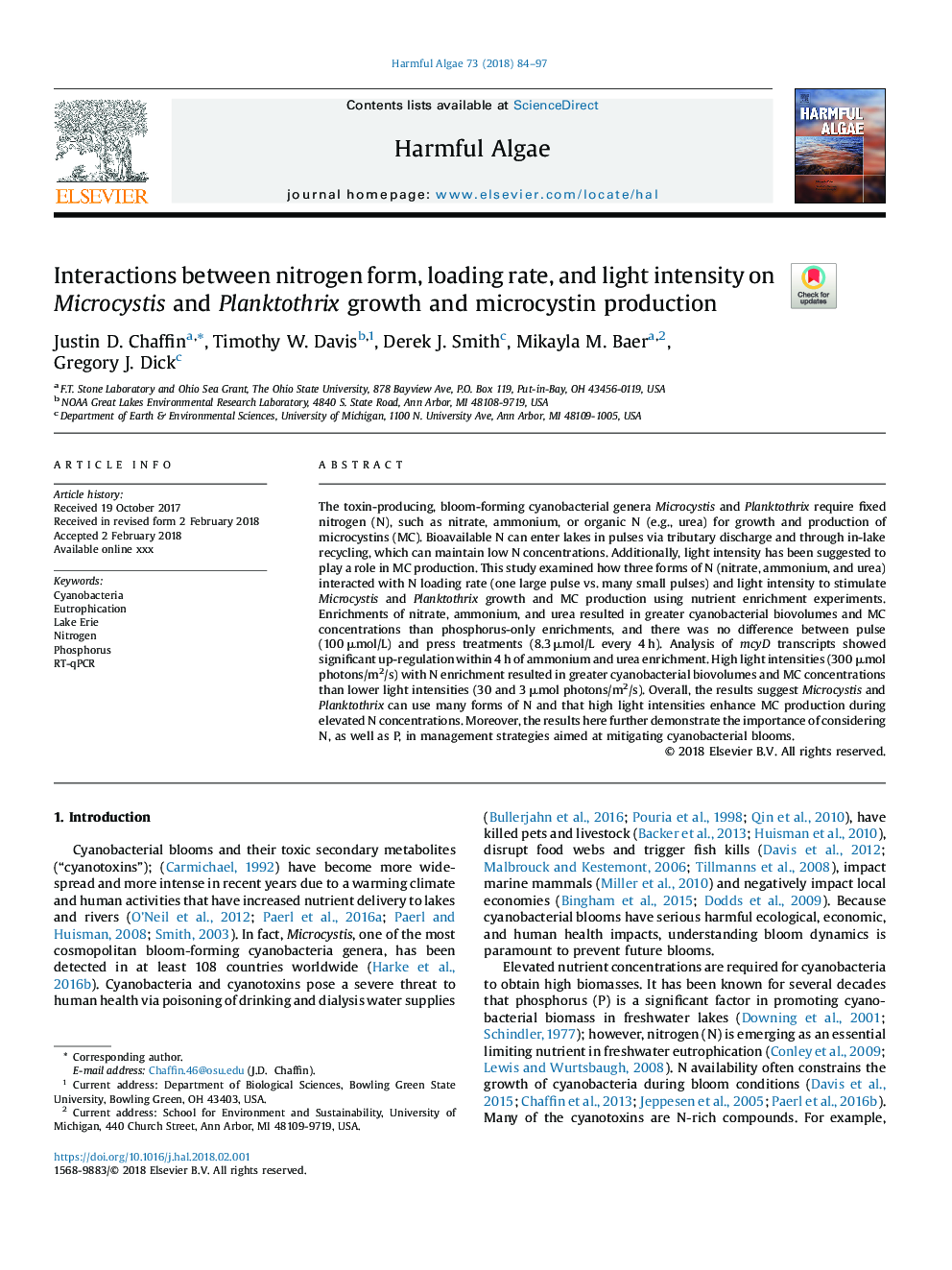| Article ID | Journal | Published Year | Pages | File Type |
|---|---|---|---|---|
| 8885691 | Harmful Algae | 2018 | 14 Pages |
Abstract
The toxin-producing, bloom-forming cyanobacterial genera Microcystis and Planktothrix require fixed nitrogen (N), such as nitrate, ammonium, or organic N (e.g., urea) for growth and production of microcystins (MC). Bioavailable N can enter lakes in pulses via tributary discharge and through in-lake recycling, which can maintain low N concentrations. Additionally, light intensity has been suggested to play a role in MC production. This study examined how three forms of N (nitrate, ammonium, and urea) interacted with N loading rate (one large pulse vs. many small pulses) and light intensity to stimulate Microcystis and Planktothrix growth and MC production using nutrient enrichment experiments. Enrichments of nitrate, ammonium, and urea resulted in greater cyanobacterial biovolumes and MC concentrations than phosphorus-only enrichments, and there was no difference between pulse (100â¯Î¼mol/L) and press treatments (8.3â¯Î¼mol/L every 4â¯h). Analysis of mcyD transcripts showed significant up-regulation within 4â¯h of ammonium and urea enrichment. High light intensities (300â¯Î¼mol photons/m2/s) with N enrichment resulted in greater cyanobacterial biovolumes and MC concentrations than lower light intensities (30 and 3â¯Î¼mol photons/m2/s). Overall, the results suggest Microcystis and Planktothrix can use many forms of N and that high light intensities enhance MC production during elevated N concentrations. Moreover, the results here further demonstrate the importance of considering N, as well as P, in management strategies aimed at mitigating cyanobacterial blooms.
Related Topics
Life Sciences
Agricultural and Biological Sciences
Aquatic Science
Authors
Justin D. Chaffin, Timothy W. Davis, Derek J. Smith, Mikayla M. Baer, Gregory J. Dick,
